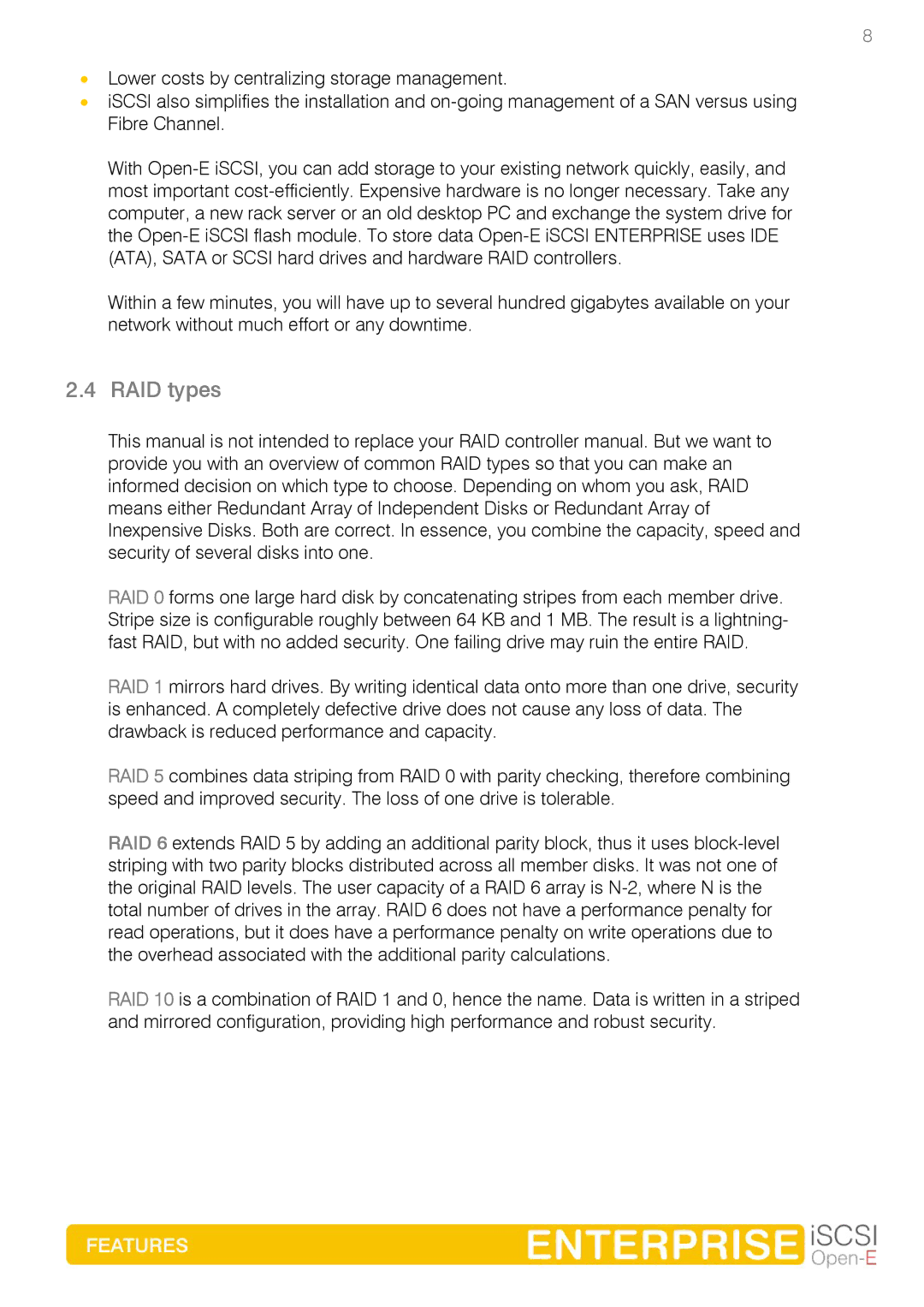8
•Lower costs by centralizing storage management.
•iSCSI also simplifies the installation and
With
Within a few minutes, you will have up to several hundred gigabytes available on your network without much effort or any downtime.
2.4 RAID types
This manual is not intended to replace your RAID controller manual. But we want to provide you with an overview of common RAID types so that you can make an informed decision on which type to choose. Depending on whom you ask, RAID means either Redundant Array of Independent Disks or Redundant Array of Inexpensive Disks. Both are correct. In essence, you combine the capacity, speed and security of several disks into one.
RAID 0 forms one large hard disk by concatenating stripes from each member drive. Stripe size is configurable roughly between 64 KB and 1 MB. The result is a lightning- fast RAID, but with no added security. One failing drive may ruin the entire RAID.
RAID 1 mirrors hard drives. By writing identical data onto more than one drive, security is enhanced. A completely defective drive does not cause any loss of data. The drawback is reduced performance and capacity.
RAID 5 combines data striping from RAID 0 with parity checking, therefore combining speed and improved security. The loss of one drive is tolerable.
RAID 6 extends RAID 5 by adding an additional parity block, thus it uses
RAID 10 is a combination of RAID 1 and 0, hence the name. Data is written in a striped and mirrored configuration, providing high performance and robust security.
